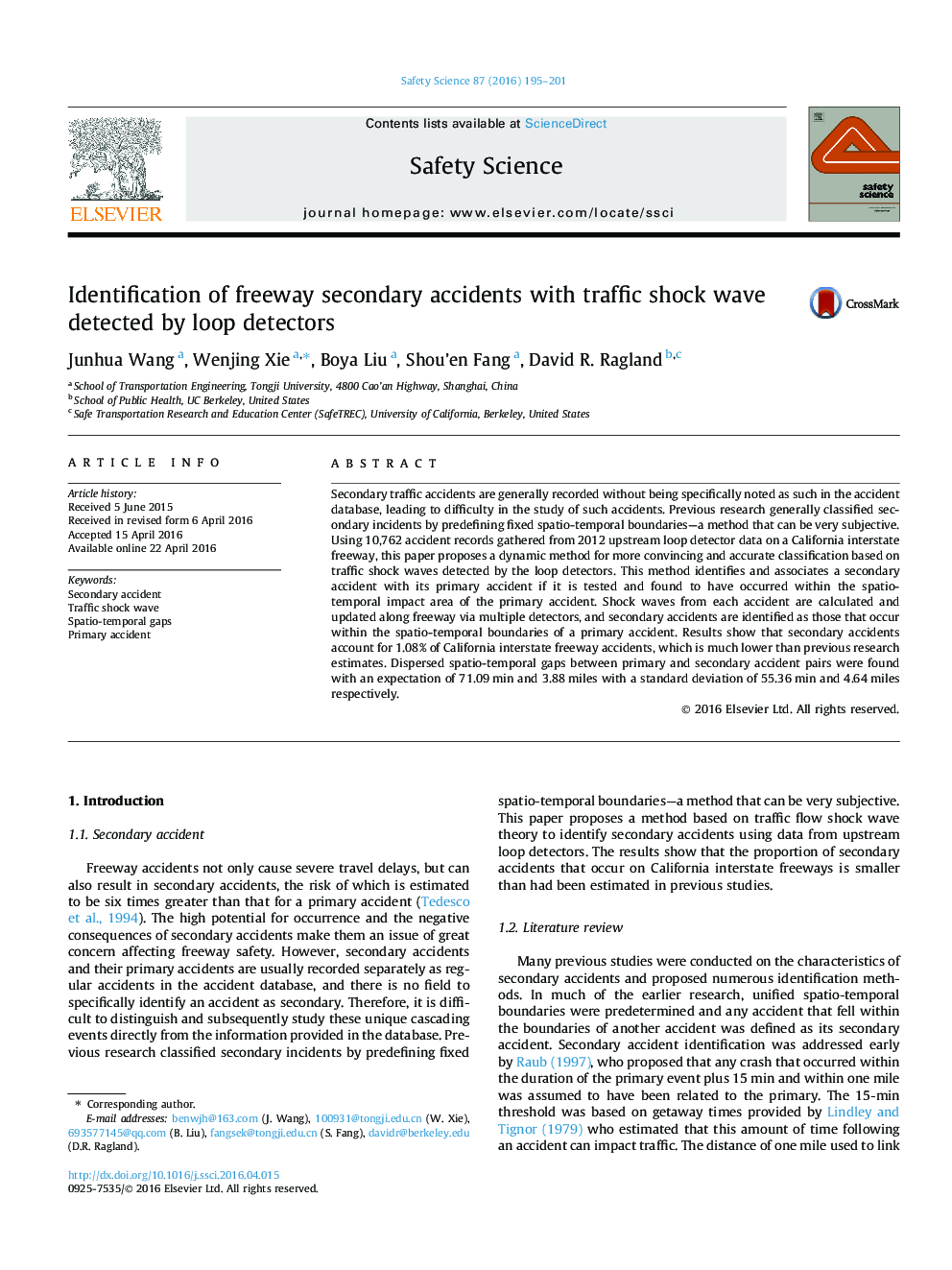| Article ID | Journal | Published Year | Pages | File Type |
|---|---|---|---|---|
| 588954 | Safety Science | 2016 | 7 Pages |
•Previous research generally classified secondary incidents by predefining fixed spatio-temporal boundaries—a method that can be very subjective. Some other dynamic definition methods based on traffic data were more reasonable but still with a slight deficiency.•A shock wave boundary filtering (SWBF) method is proposed that a secondary accident is associated with its primary accident if it is tested and found to have occurred within the spatio-temporal impact area of the primary accident.•Shock waves from each accident are calculated and updated along freeway via multiple detectors to achieve a more accurate impact scope.•Secondary accidents account for 1.08% of California interstate freeway accidents, which is much lower than previous research estimates.•Dispersed spatio-temporal gaps between primary and secondary accident pairs were found with an expectation of 71.09 min and 3.88 miles with a standard deviation of 55.36 min and 4.64 miles respectively.
Secondary traffic accidents are generally recorded without being specifically noted as such in the accident database, leading to difficulty in the study of such accidents. Previous research generally classified secondary incidents by predefining fixed spatio-temporal boundaries—a method that can be very subjective. Using 10,762 accident records gathered from 2012 upstream loop detector data on a California interstate freeway, this paper proposes a dynamic method for more convincing and accurate classification based on traffic shock waves detected by the loop detectors. This method identifies and associates a secondary accident with its primary accident if it is tested and found to have occurred within the spatio-temporal impact area of the primary accident. Shock waves from each accident are calculated and updated along freeway via multiple detectors, and secondary accidents are identified as those that occur within the spatio-temporal boundaries of a primary accident. Results show that secondary accidents account for 1.08% of California interstate freeway accidents, which is much lower than previous research estimates. Dispersed spatio-temporal gaps between primary and secondary accident pairs were found with an expectation of 71.09 min and 3.88 miles with a standard deviation of 55.36 min and 4.64 miles respectively.
